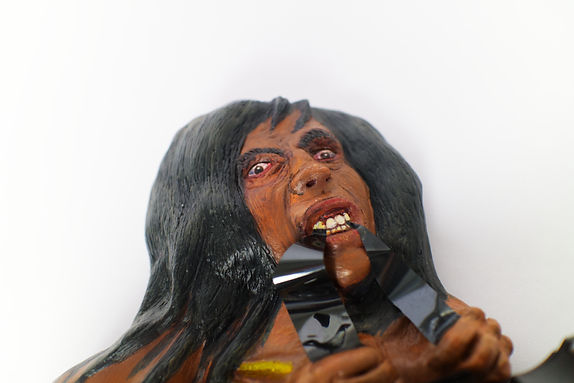THE 21PIRATES
NEKRO
Illustrator / Animator / Graphic Designer /Aspie
FOLLOW AT

By the end of the 1960s, the world had radically changed; the hippy movement was in full swing, and a new generation rebelled against the mainstream. The violence that occurred during the civil rights protests and the atrocities of the Vietnam War left a stain on the eyes of many young people. Coincidentally, the finale of George A. Romero’s Night of the Living Dead (1968) was eerily reminiscent of the chaos that was happening in real life. We see a posse of gun-toting rednecks, stack a pile of dead bodies and set their remains on fire. The murder of actress Sharon Tate by the "Manson Cult" in 1969 revealed the seedy underbelly of Hollywood. The illusion of glitz and glamour was fading away, and many of the movies from the 1970s and early 80s were a response to it. Gritty, provocative, and politically incorrect thrillers replaced flying saucers and "creature features." One film went entirely over the top, gaining a spot on the infamous "Video Nasties" list.
Cannibal Holocaust (1980), directed by Ruggero Deodato, is a notorious Italian horror film that pioneered the "found footage" format. It follows an anthropologist who recovers reels shot by a missing documentary crew deep in the Amazon, revealing their brutal treatment of indigenous tribes and their own gruesome fate. The film gained infamy for its graphic violence, real animal killings, and disturbing depictions of native people, leading to bans in multiple countries and the director’s arrest under suspicion of making a snuff film. charges he disproved by presenting the actors alive. Despite its controversy, it remains a cult classic and a provocative commentary on media sensationalism and exploitation.
In the early 80s, the home video was on the rise. Distributors 'GO VIDEO' picked up the rights and released Cannibal Holocaust on VHS and Betamax in 1982 (with 6 minutes of cuts). Many other titles that never made it to British cinemas found their way onto the shelves of rental stores. The British censors had zero sanction over home videos, and outcries of moral panic soon ensued. Not long after, a crusade led by Mary Whitehouse, MP Graham Bright, James Ferman (Head of the BBFC), and the National Viewers' and Listeners' Association (NVLA) joined forces to regulate what the general public was allowed to watch at home.
Shielded by the Obscene Publications Act and encouraged by various religious groups and tabloid newspapers, a list of titles was labelled as "Video Nasties." 39 of these titles were put under section 1 of the Director of Public Prosecutions (DPP) act. At least 100 more titles were included in the Nasties list but were relegated to lesser categories. These 39 titles were outright banned. Copies of the video cassettes were seized and destroyed by the authorities. Anyone caught trading any of the 39 "nasties" was fined and/or imprisoned. Thankfully, a few courageous souls kept their copies hidden, and they are now highly sought-after collector’s items. This is just a very brief summary of an extremely complicated time.
All that remains
Censorship of horror and other adult entertainment eased in the UK when James Ferman retired from the BBFC in 1998. Many titles that were previously banned, heavily cut or refused classification found their way onto DVD and the perishing VHS format. By the mid-2000s, titles such as The Last House on the Left and Lucio Fulci’s gory masterpiece Zombie Flesh Eaters (1979) were released completely uncut. The infamous shockumentary Faces of Death (1978), and of course... Cannibal Holocaust (1980) was released with several cuts due to scenes of animal cruelty and strong sexual violence, something that censors are still very squeamish about.
There are a few titles that are still legally unavailable in the UK; most of them predate and postdate the Video Nasties era. The reasons vary and probably wouldn’t cause a ripple if they were released today.







